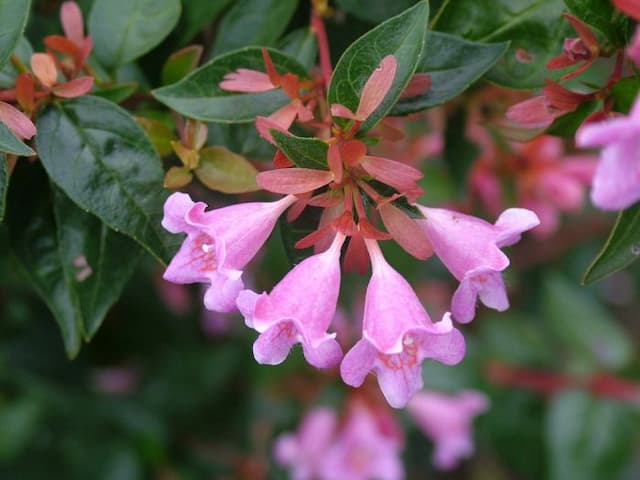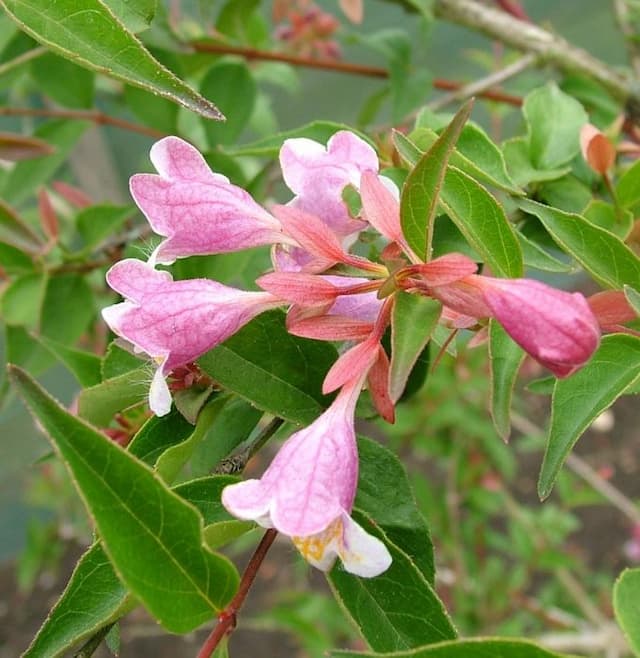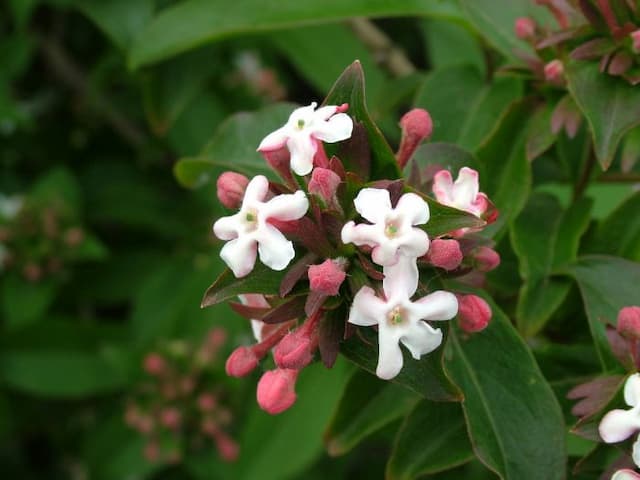Pincushion Flower Scabiosa 'Butterfly Blue'

ABOUT
The Butterfly Blue, as with its evocative name, bears delicate, graceful flowers with a standout lavender-blue hue, resembling the gentle wings of a butterfly. The blossoms are perched atop slender stems, and each flower is a tight cluster of tiny, tubular flowers, collectively forming a pincushion-like shape that is both distinctive and enchanting. Each flower head boasts an array of small, frilly petals that flutter in the breeze. The foliage of the Butterfly Blue contrasts with its flowers; it is comprised of a mound of lacy, gray-green leaves that are finely divided, giving the plant a soft, feathery appearance. This greenery sets the stage for the blooms, which rise above in a charming and whimsical display of color and form. The enchanting flowers attract a host of butterflies and bees, who frequent the plant for its nectar and add to the visual appeal of the otherwise serene setting it creates in the garden.
About this plant
 Names
NamesFamily
Caprifoliaceae
Synonyms
Pincushion Flower, Butterfly Blue Scabiosa
Common names
Scabiosa columbaria 'Butterfly Blue', Sixalix atropurpurea 'Butterfly Blue'
 Toxicity
ToxicityTo humans
The Pincushion Flower is generally considered non-toxic to humans. There are no significant reports of poisoning or adverse effects from ingesting this plant. However, as with any plant, individual allergies or sensitivities can occur, so it's advisable to avoid consuming plant material that is not commonly recognized as edible.
To pets
The Pincushion Flower is also not known to be toxic to pets. It should be safe for dogs, cats, and other animals if they happen to ingest small quantities. Nevertheless, ingestion of any plant material can potentially cause mild stomach upset in some pets due to the ingestion of non-food items, but toxicity is not a concern with this particular species.
 Characteristics
CharacteristicsLife cycle
Perennials
Foliage type
Deciduous
Color of leaves
Green
Flower color
Blue
Height
1-2 feet (0.3-0.6 meters)
Spread
1-2 feet (0.3-0.6 meters)
Plant type
Herb
Hardiness zones
3-9
Native area
Europe
Benefits
 General Benefits
General Benefits- Attracts Pollinators: Scabiosa 'Butterfly Blue' is known for its ability to attract butterflies, bees, and other beneficial insects to the garden.
- Long Blooming Period: This plant offers a lengthy season of flowers, often blooming from late spring to frost.
- Drought Tolerant: Once established, it is quite tolerant of drought, making it suitable for xeric landscapes or water-wise gardens.
- Low Maintenance: It generally requires minimal care, thriving in a variety of conditions without needing much attention.
- Aesthetic Appeal: With its beautiful lavender-blue flowers, it adds a touch of elegance and charm to any garden setting.
- Deer Resistance: The plant is not a preferred food source for deer, making it a good option for gardens in areas with deer populations.
 Medical Properties
Medical PropertiesThis plant is not used for medical purposes.
 Air-purifying Qualities
Air-purifying QualitiesThis plant is not specifically known for air purifying qualities.
 Other Uses
Other Uses- Natural Dye: Scabiosa 'Butterfly Blue' can be used to create natural dyes for textiles, imparting a range of soft blue and lilac hues.
- Photography Prop: The striking blue flowers make it a popular choice for photographers looking for natural, eye-catching elements in garden and floral photography.
- Art Inspiration: Artists may use the distinctive form and color of 'Butterfly Blue' as inspiration for paintings, drawings, or fabric designs.
- Floral Arrangements: Not simply for gardens, 'Butterfly Blue' can be used as a filler or accent in floral arrangements, adding texture and depth.
- Educational Tool: The plant can be used in educational settings to teach botany and the importance of pollinators in the ecosystem.
- Culinary Garnish: While not commonly known for its edibility, the petals of Scabiosa 'Butterfly Blue' can be used as a delicate garnish for desserts and salads.
- Craft Projects: The dried flower heads of 'Butterfly Blue' can be used in craft projects, such as homemade potpourri or in the creation of natural jewelry.
- Garden Companion Planting: 'Butterfly Blue' can be planted alongside vegetables to attract beneficial insects that help with pollination and pest control.
- Decorative Pressed Flowers: The flowers can be pressed and used in decorative craftwork such as greeting cards, bookmarks, or in framing.
- Wedding Decor: Due to their romantic appearance and long-lasting nature, 'Butterfly Blue' can serve as part of wedding bouquets or as table decorations.
Interesting Facts
 Feng Shui
Feng ShuiThe Scabiosa is not used in Feng Shui practice.
 Zodiac Sign Compitability
Zodiac Sign CompitabilityThe Scabiosa is not used in astrology practice.
 Plant Symbolism
Plant Symbolism- Admiration: The delicate and intricate blossoms of Butterfly Blue, or Pincushion Flower, often symbolize admiration, embodying the appreciation for the complexity and beauty found in the natural world.
- Love: With its soft, feathery petals, the Pincushion Flower is also a symbol of love—both romantic and platonic—representing an affectionate and tender connection between individuals.
- Purity: The pure, bright blue hues of the Pincushion Flower are commonly associated with purity and cleanliness, suggesting an untainted and wholesome aspect to the plant's symbolism.
- Beauty: Its pleasing aesthetic makes the Pincushion Flower a natural emblem of beauty, often used to convey the notion of simple and understated elegance.
 Water
WaterPincushion flower requires regular watering, especially during prolonged dry spells, to keep the soil evenly moist but not soggy. In general, water the plant with approximately 1 inch of water per week, adjusting as necessary during hot, dry periods or rainy conditions. Ensure that the plant receives deep, thorough watering rather than just a light sprinkle, encouraging strong root growth. Over-watering or allowing the plant to sit in waterlogged soil can lead to root rot, so adequate drainage is important. In very hot weather, you might need to water the pincushion flower twice a week to maintain proper soil moisture.
 Light
LightThe pincushion flower thrives best in full sun to partial shade conditions. It should be placed in a spot where it can receive at least six hours of sunlight daily to promote robust growth and prolific blooming. Though it can tolerate some shade, too little light may result in fewer flowers and a leggier plant. An ideal location would provide morning sunlight and some afternoon shade, especially in regions with extremely hot summers, to protect the plant from scorching.
 Temperature
TemperaturePincushion flower performs well in a temperature range between 60°F and 85°F, which are ideal conditions for this plant. While it can tolerate temperatures down to about 40°F, it should be protected from frost and freezing temperatures which can damage or kill the plant. During the hot summer months, the pincushion flower can endure higher temperatures but may require additional watering to combat the heat.
 Pruning
PruningPrune the pincushion flower to remove spent blooms and encourage a second flush of flowers. Deadheading regularly will also help to maintain the plant's appearance and prevent self-seeding, if desired. The best time for more extensive pruning is in the late winter or early spring, when cutting back the plant can help to promote bushier growth and more stems for flowering. It's often not necessary to prune more than once a year unless the plant looks untidy or is overgrown.
 Cleaning
CleaningAs needed
 Soil
SoilThe Pincushion Flower thrives in well-drained soil with a neutral to slightly alkaline pH of around 6.5 to 7.5. A mix of loamy garden soil, compost, and grit or perlite to ensure good drainage constitutes the best soil mix for this perennial.
 Repotting
RepottingPincushion Flowers are typically not repotted often as they are perennials; they should be divided or repotted every 3-4 years to prevent overcrowding and rejuvenate plant vigor.
 Humidity & Misting
Humidity & MistingPincushion Flowers are adaptable and do not require high humidity; they prefer the average humidity found in outdoor garden settings.
 Suitable locations
Suitable locationsIndoor
Ensure bright light, well-draining soil, and infrequent watering.
Outdoor
Plant in full sun to partial shade, in well-drained soil.
Hardiness zone
3-9 USDA
 Life cycle
Life cycleThe life of Scabiosa 'Butterfly Blue', commonly known as the Pincushion Flower, begins with seed germination, usually occurring in spring when temperatures are mild and consistent moisture is present. The seedlings emerge and establish a rosette of foliage, followed by the development of the deep root system. As the plants mature, they send up flowering stems from late spring to early summer, showcasing their characteristic lavender-blue, pincushion-like flowers which are highly attractive to pollinators. After pollination, flowers develop into seed heads, which can self-sow under suitable conditions or be collected for propagation. Over the course of the growing season, Pincushion Flowers may continue to bloom if spent flowers are deadheaded regularly. The plant is a short-lived perennial, often treated as an annual or biennial, and it may need to be replanted or allowed to self-seed to maintain its presence in the garden.
 Propogation
PropogationPropogation time
Spring to early summer
Propogation: The most popular method for propagating the pincushion flower, Scabiosa 'Butterfly Blue', is by seed. Propagation should ideally occur in spring or early summer, aligning with the plant's natural growth cycle for optimal results. To propagate by seed, one should sow the seeds thinly onto a tray or pot filled with a well-draining seed starting mix. This mix should be kept moist but not waterlogged, and the seeds should be placed in a bright area without direct sunlight until germination occurs, which usually takes about two to three weeks. Once the seedlings have grown enough to handle, typically when they have a couple of sets of true leaves, they can be transplanted into individual pots or their final location in the garden, spacing them roughly 12 inches (30 cm) apart to allow sufficient room for growth.







![Himalayan honeysuckle [Golden Lanterns]](/_next/image?url=https%3A%2F%2Fplants-admin.emdemapps.com%2Fimages%2Fplants%2F%2Fimages%2F604b55302cc87.png&w=640&q=75)

